






















































The tween beauty revolution is real, but what does it mean for the sector?

P26: JOB STATUS
How to avoid falling into the disguised employment trap

P29: MANIFESTO 2024
The NHBF’s vision for the sector after the general election
P32: CLIENT JOURNEY
Refine your customer experience to keep them coming back




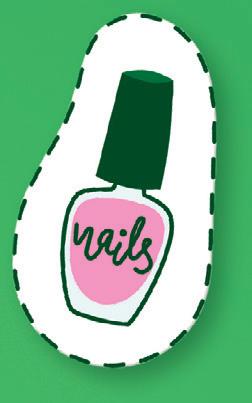



















P38: POSTURE
Mind your back and avoid health problems for you and your staff





5 Hello and welcome Chief executive Caroline Larissey on the potential changes afoot
6 The 11 news things you need to read this issue
From the NHBF’s latest industry statistics and quarterly survey results to tips on content creation
22 Tween beauty
The tween beauty revolution is big business, but how do you navigate the requests of this demographic both safely and ethically?
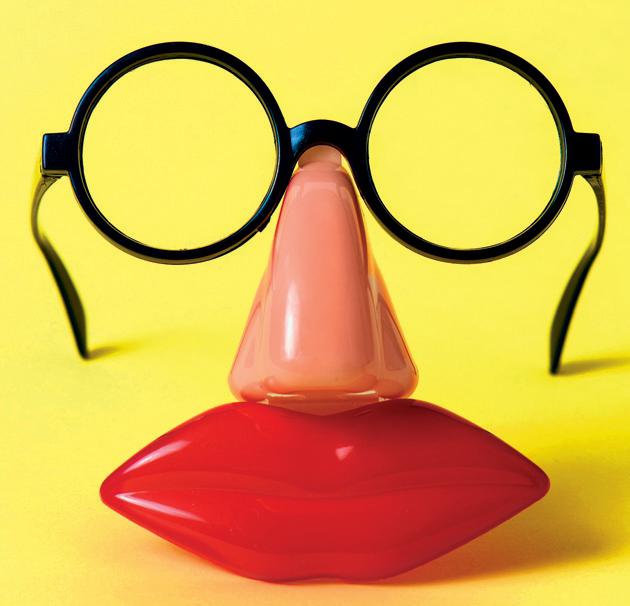
Make sure you’re up to date on the rules around disguised employment
The highlights of the NHBF’s latest manifesto
What does the client journey look like for salons and barbershops in 2024?
Exploring the hair loss services and products you could add to your business





INSPIRATION 46 Mood board The Scratch Stars Awards finalists reveal their work 48 What’s trending From beauty supplements to male grooming
50 60 seconds with... Glitterbels entrepreneur and unicorn enthusiast Annabel Maginnis









This year, the celebratory awards recognising the best talent and top industry influencers being held at the stunning Bloomsbury Ballroom on 18th November 2024.
Make sure your brand is associated with the biggest names and trending influencers as they celebrate in style by partnering as a sponsor of the awards.
The 2023 NHBF Top 100 Influencer Awards delivered a huge impact - raising the profile of the industry.
With a long-lasting awareness campaign, sponsors enjoyed huge exposure in their association with the event. During the 2023 announcement week significant engagement was delivered, including:
• Generating 105,436 impressions across social media channels
•The awards campaign had 17,095 post reach with 828 engagements
•NHBF social media had 3610 profile activities, with 3492 profile visits
•2800 hair and beauty professionals viewed the NHBF Top 100 Influencers Reel
•The campaign delivered 1000 content interactions
• NHBF welcomed 22.2% new followers
This is your opportunity to get involved for 2024 – be a sponsor and benefit from ongoing association with this key, and growing, prestigious industry event
Scan below to see our highlight reel from 2023.

The magazine of the National Hair & Beauty Federation
THE NHBF
One Abbey Court Fraser Road
Priory Business Park
Bedford MK44 3WH 01234 831965
nhbf.co.uk
sfenquiries@salonfocus.co.uk
CHIEF EXECUTIVE
Caroline Larissey
DIGITAL MARKETING DIRECTOR
Samantha Turner-Meyern
EDITORIAL
Editor Hollie Ewers hollie@salonfocusmagazine.co.uk
Content sub-editors James Hundleby, Kate Bennett, Amy Beveridge
DESIGN
Art Editor Tom Shone
Picture researcher Jessica Marsh
ADVERTISING advertising@salonfocusmagazine.co.uk 020 7880 6230
PRODUCTION
Production director Jane Easterman
Account director Joanna Marsh joanna.marsh@redactive.co.uk
PRINTER
Manson Group, St Albans
COVER ILLUSTRATION iStock
© The NHBF 2024
All views expressed in salonfocus are not necessarily those of the NHBF. All efforts have been taken to ensure the accuracy of the information published in salonfocus However, the publisher accepts no responsibility for any inaccuracies or errors and omissions in the information produced in this publication. No information contained in this publication may be used or reproduced without the prior permission of the NHBF.
Recycle your magazine’s plastic wrap.
Check your local LDPE facilities to find out how.







NHBF


WE HAVE BEEN CAMPAIGNING FOR SUPPORT FOR OUR SECTOR
It’s so good to be welcoming you all to the Summer edition of salonfocus. Lots has happened and changed since the last issue and, with the general election taking place just days after this is published, it’s very likely that a lot will happen before the next issue! With the election in mind, a key part of our activities has been campaigning for support for our sector and advancing our priorities in Westminster. We held a successful NHBF manifesto event in parliament in May, which provided us with a valuable opportunity to share our analysis of potential impacts and opportunities for the sector, as well as our key priorities, with policymakers. Read about the event and our manifesto highlights on page 29.
director of quality and standards Cathy Weston, and our new beauty quality and standards manager Kelly Edwards. We’re thrilled to have them both on board. Learn what motivated them all to join the NHBF on page 20. This issue also features a host of industry news, trends and practical advice to help you navigate the challenges and opportunities ahead. Our topical cover feature on tween beauty (page 22) considers what business owners in the sector should be considering when dealing with pre-teen and teenage clients. Finally, thank you to everyone who took part in the salonfocus readership survey. Your feedback (page 44) is vital in helping us to create a membership magazine that is not only informative and helpful, but that you all love and enjoy!


ector, with he

Following the NHBF’s own elections earlier this year, I’m delighted to introduce our new Board members, who each bring diverse perspectives and a wealth of experience. We also welcome our new























The NHBF’s latest industry statistics report for 2023 reveals how the sector is restructuring and trying to recover post pandemic.
The data, collected from March 2022 to March 2023, offers an overview of the state of the hair and beauty sector in the UK. The report includes success rates, turnover, start-up numbers, working patterns, apprenticeships, age, gender and industry trends. The main findings for 2023 reveal:
● There are 49,295 hair and beauty businesses in the UK – an increase of 870 (2%); a slower rise than the 5% in the previous year. The highest numbers are in London, the South East and the North West.
● The hair and beauty services sector generated around £4.56bn in turnover to the UK economy. This was a decrease from £4.6bn the year before.
● More than 75% of hair and beauty businesses have an annual turnover of less than £99k.
● 77% of hair and beauty businesses employ fewer than five people and 95% employ fewer than 10 people.
● There was a net reduction in the number of hairdressers opening in the first half of the year for the third year running.
● Barbershops, beauty salons and nail bars remain in the top 10 retail categories for growth – ahead of fast-food takeaways, supermarkets and vaping stores and tobacconists.
● More than 238,500 people work in hair and beauty, excluding salon owners and managers.
● The number of salon owners and managers rose by 2%.
● 46% of the workforce are aged 16-34. The number of 16- to 24-year-olds working in the sector has fallen by 36% from 56,105 in 2019 to 35,935 in 2022.
● The proportion of full-time to part-time workers decreased in 2022-23, with 51% of the workforce working full-time.
● The number of apprenticeship starts continues to decline in three nations of the UK after a slight rise in 2021-22. Members can download the booklet for free at nhbf.co.uk/industry-statistics
The UK ranks fourth in Europe in spending on cosmetics and personal care items.
With a total spend of £8.54bn in 2021, the UK came in behind Germany (£11.7bn), France (£10.34bn) and Italy (£9.19bn).
According to marketing company Upbeat Agency, skincare appears to be the dominant category, accounting for more than a quarter of the European cosmetics market in 2019.
RETAIL CHAMPS
Barbershops were the fastest-growing retail businesses in 2023, says a report by the Local Data Company.
last year, which is 441 units higher than the previous year’s increase. The Retail and Leisure Trends report also found nail salons (+302 units) and beauty salons (+254 units) were among the top 10 fastest growing categories.
SKINCARE FAILS
In a round-up of common
made by TikTokers in #GRWM [get ready with me] and #skincareroutine posts, pulling on skin too harshly when applying products came out on top at 60%
The other main culprits identified by salon software brand Fresha were:
• Skipping skincare steps, such as cleanser and toner, or layering products in the wrong order (54%)
• Not applying products to the chest or neck (54%)
• Not applying SPF after their morning skincare routine (22%).
EMBRACING NEURODIVERGENCE
A global survey has highlighted the presence of neurodivergence in the beauty and wellness sector. The poll, by software provider Vagaro, showed:
27% said they work on a team with a neurodivergent peer
43% of participants said they offer services specifically tailored to meet the needs of clients who are neurodivergent or on the autism spectrum
56% said technology is helpful in making accommodations for neurodivergent clients.
Nail salons are the most common UK beauty business type, according to a money.co.uk report. Here’s the breakdown of the number of businesses in 20 of the biggest UK cities:
3
NHBF digital marketing executive Vivian Lau shares her top five tips for creative content creation.
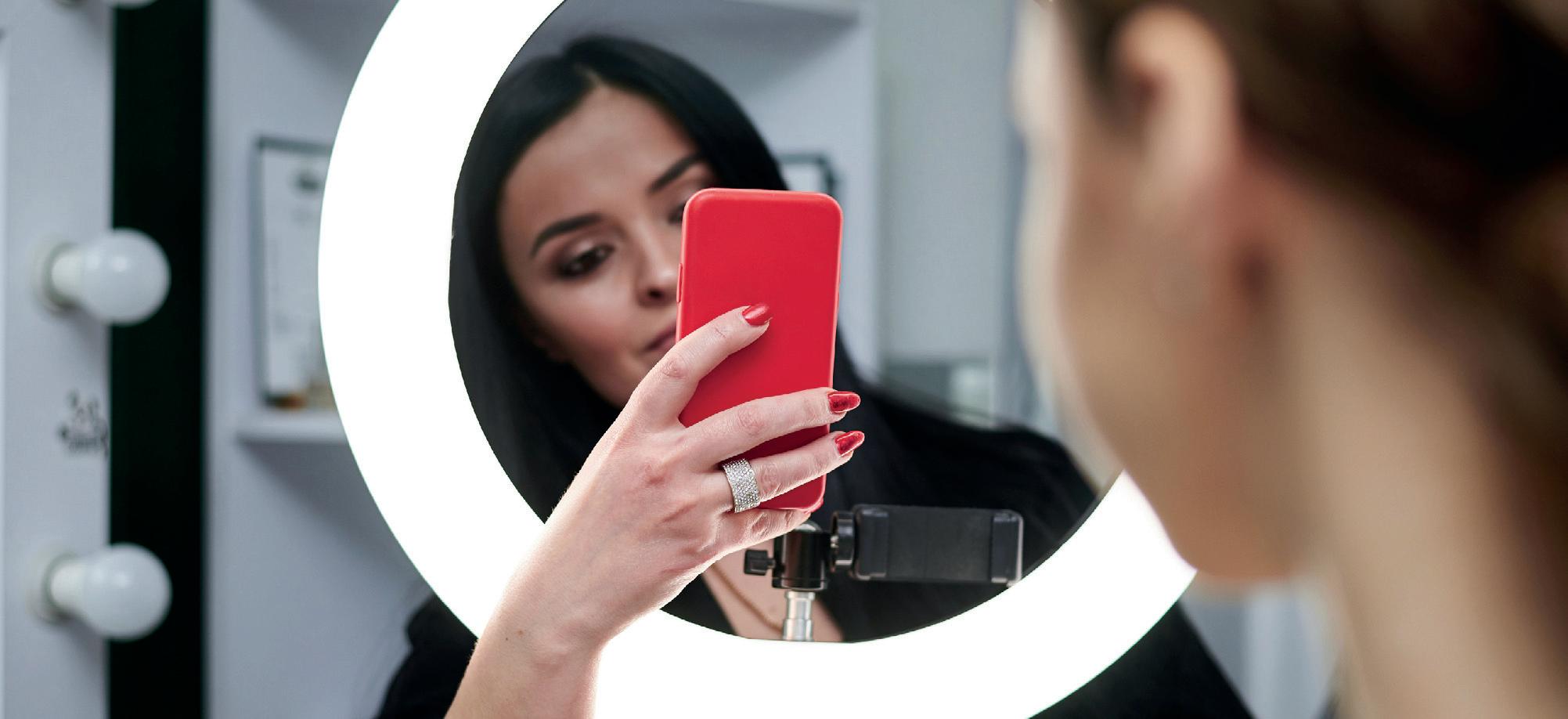




Creating content is no longer just about snapping a photo and posting it online. While it’s easy to get stuck in a creative rut, there are plenty of ways to level up your content game. With a few simple tips and tools, you’ll be delighting your followers while attracting new clients in no time.
1
LIGHTS, CAMERA, ACTION
When it comes to equipment, you don’t need to break the bank for top-notch quality
– your phone’s camera is a powerful tool, especially when paired with affordable accessories such as a ring light and tripod. The ring light brightens up your shots perfectly, while the tripod frees up your hands to work your magic uninterrupted.
2
VIVA LA VIDEO
If a picture is worth a thousand words, consider the storytelling power of video. Instagram Reels are wildly popular and your golden ticket to grabbing attention and boosting engagement, so sprinkle them throughout your socials. Share quick transformations, take
your followers behind the chair, or teach bite-sized tutorials on trendy styles. Keep your videos short and sweet, remove background noises and always film in portrait.
3 WORK SMARTER, NOT HARDER
Who said editing had to be a headache? Reels templates come with timed clips and trending music built in. They are your secret weapon for quick, polished content. Simply drop in your photos or videos, and you’ve got an on-trend Reel ready to go.
4 CAPTION THIS
While visuals are key, don’t underestimate the power of a great caption. Followers want to hear
from real people, so keep your captions authentic and use them to provide context, share your personality through stories or add some humour to connect with your community. Another great use of captions is by encouraging followers to click on your website or booking link.
5 THE GOLDEN RULES
● Set up a backdrop that screams of your branding.
● Consistency is key here – your followers should instantly recognise your vibe.
● Never cut off the tops of heads or bottoms of feet – keep your gorgeous work in frame.
● Tag the brands of the products you use and always tag your salon’s location to catch new eyes and get your talents seen!
International left-handed haircutting educator Ben came sixth in the NHBF’s Top 100 Influencer Index 2023.
HOW DOES IT FEEL COMING SIXTH?
I was really surprised I came so high. I was incredibly humbled, and reassured that I’m doing the right thing. So, I think it has helped me, giving me a great sense of guidance that what I’m doing is working.
WHEN DID YOUR HAIR CAREER BEGIN?
I’ve been in the industry since I was 16 – I started by doing part-time work on a Saturday, while I was pursuing my A levels, and then at college doing architecture. I didn’t really have a natural aptitude for architecture, but I loved my job in the salon. I enjoyed being part of a team and I was very enthusiastic, especially being responsible for elements of service – making people feel important and special.
When I completed my qualifications in architecture I didn’t pursue it because I’d been blown away by the hair industry. So, I started to train in hair and work full time and became a stylist pretty quickly. I worked for one salon for 15 years and then opened my own salon.
WHAT MIGHT PEOPLE NOT KNOW ABOUT YOU?
I’m almost fluent in German and Spanish. I learnt German in school and revisited it in lockdown, as well as taking up Spanish. I use the Duolingo app every day to keep it going.
WHAT DO YOU LOVE ABOUT YOUR JOB?
The reason I teach is because I love to learn. And I love to learn with such a visceral sense that it doesn’t matter what I’m learning – whether it’s a new language or something else - but in regards to hairdressing, I realised that when you really want to master it, you’ve got to teach it, you’ve got to be able to share it, if you can share it and explain it simply, then you really understand it.

where I managed to pay off some debts, lick my wounds and heal a bit.
HOW DID YOU START TEACHING?
HOW WAS YOUR SALON OWNER EXPERIENCE?
I had my salon for six years – however, it was a commercial failure. It never made any money and I’d never experienced stress or worry like it. Following the liquidation of my business I worked at a friend’s salon,
I started teaching myself first, to retrain myself to improve my technique and my understanding of haircutting. This helped me to enter education from a consumer perspective as I used education in person and online to change my life. This perspective helps me to tailor my education to the salon owner and the individual as I can relate.
IF YOU WEREN’T A HAIRDRESSER, WHAT WOULD YOU BE?
I’d be a chef – I love the culinary industry. I think there’s a lot of similarities to hair, in that it’s creative with a specific craft, processes and skills to master.
WHAT’S KEY TO YOUR SUCCESS?
Learning. The fact that I love to learn has always kept my ego in check. It’s always kept me working hard, hungry and curious. All the key attributes I have that deliver something positive to my success have come from my love of learning.
I’ve got a new book coming out this year – it’s the revisited version of the first book. It now includes QR codes so, if you’ve just read a bit about a theory, you can scan the code and it’ll take you to a video of a practical demonstration.
Socials: @benbrownhair
IG followers: 370k
TT followers: 96.7k







The NHBF's Top 100 Hair and Beauty
Influencers Index is back for its fourth year, and nominations are now open!
We’re looking for individuals who make a big diff erence in the hair, beauty, barbering and aesthetics industries. Someone who inspires others and has a positive impact across social media.
DO YOU KNOW SOMEONE WHO FITS THE BILL?
Nominate them now (you can nominate yourself too) and let the industry know how AWESOME they are!

Scan the QR code below to learn more and submit your nominations today! Or go online at nhbf.co.uk/top-100 Nominations close on 9 August 2024





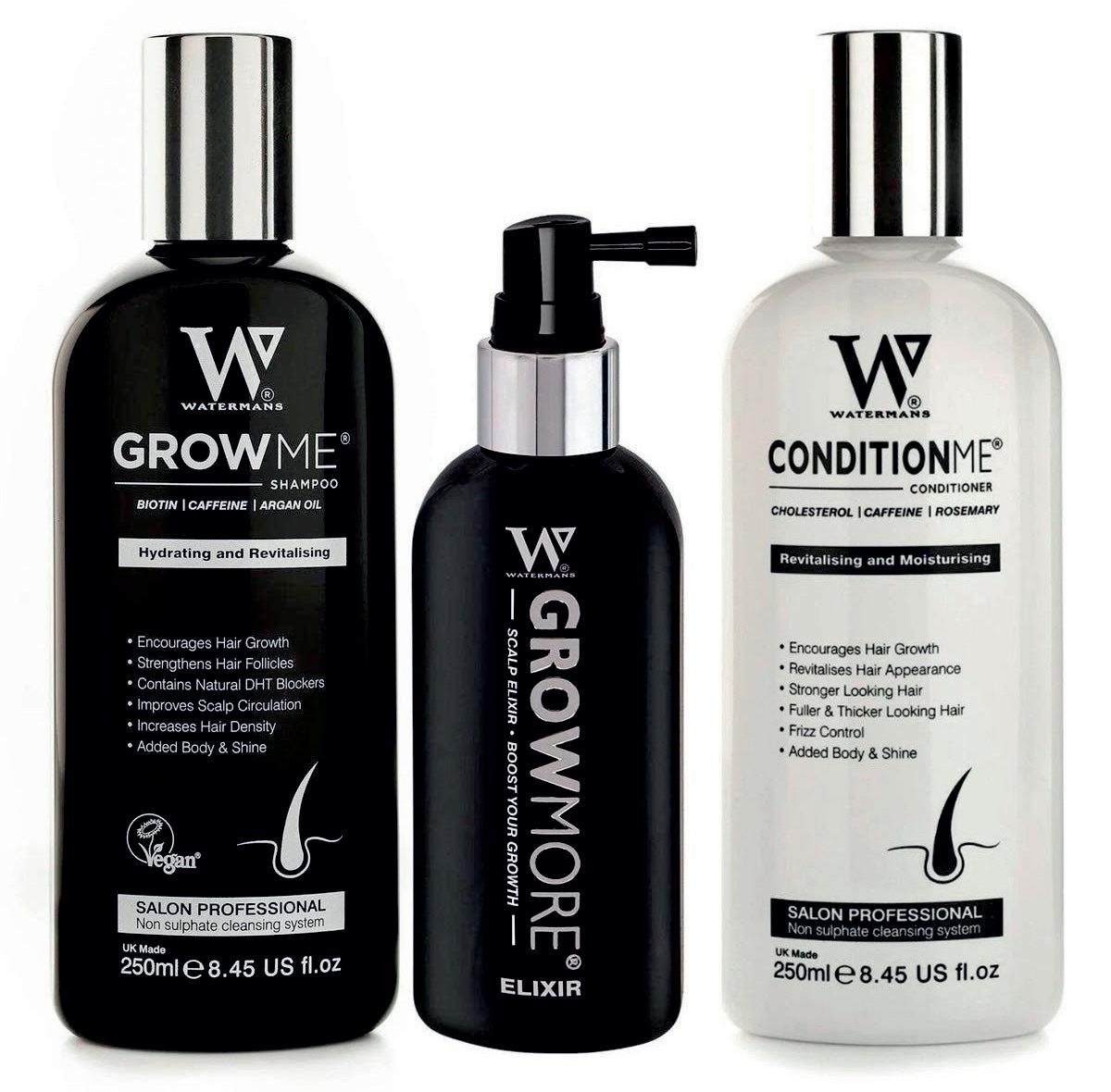





Haircuts for Homeless (H4H) is celebrating its 10th anniversary this summer.
Founded by Stewart Roberts, the charity has spent the last decade ‘humanising the face of homelessness’ and bringing hope to thousands of people with the simple gesture of a free haircut.
‘The impact of our work is uniquely measured in smiles,’ Stewart says. ‘It may sound flippant, but the best measurement is the before and after photos and videos we have of the guests. You see them transform before your eyes – their demeanour, mood and confidence boosted with the service we give.’
Stewart was inspired to set up H4H in 2014 while
volunteering for the Salvation Army in Romford, Essex, and decided to bring along his scissors one day. Ten years later and the charity has built a community of skilled volunteers across the UK who give their time free of charge to provide haircuts for homeless people.
In 2022 Stewart was awarded an MBE for his charitable work – however, fundraising efforts are a continuous
challenge, he admits. ‘Whether it’s a little or lot, we rely on ongoing support, which enables us to deliver, grow and develop this service for the homeless… The hairdressing industry is known for its generosity and willingness to help people – we see that in the volunteers who so readily come to us.’
Find out more at haircuts4homeless.com and via Instagram @haircuts4homelessuk
Wearing your hair (literally) was a highlight at Coachella this year, with US rapper Doja Cat performing in an outfit made of platinum blonde hair extensions and joined by 23 hair monsters – dancers dressed head to toe in the same extensions.





‘Creating a beauty industry that looks like you’ is what the British Beauty Council wants your help with. Its Beauty Census intends to uncover the true make-up of the industry – take part in the survey at surveymonkey.com/r/MSL9LN3



The NHBF supports the #VATBurn campaign to make sunscreen more affordable. Calls for SPF 30+ to be considered a daily skincare essential, and exempt from 20% VAT, have been made to the government by charities, medics and retailers.







● 60,000+ free haircuts have been given
● 600 volunteers have been recruited
● 80+ projects have been opened by the charity across the UK and Ireland






A large proportion of the sector's young professionals are feeling vulnerable –the Hair and Beauty Charity reports a 200% rise in 18- to 30-year-olds seeking help in the last five years.



could do clients more harm than good. A study suggests more than half (60%) of the platform’s hacks – including hair cycling and using apple cider vinegar – are potentially harmful to hair






Wet wipes containing plastic are on their way out. The UK government has taken steps to ban the products across the four nations from this summer and autumn.
















Having so much going on in your salon makes it easy to rush through your insurance renewal, which can result in underestimating the level of protection you need. We are here to help you arrange the cover that is right for you, so your business and livelihood are protected should the worst happen.
Dedicated and experienced team
Members receive a 10% discount off their total premium
Flexible record keeping options
Enhanced equipment & stock cover
"Jensten go above and beyond to ensure my salon is sufficiently protected. I have been a satisfied customer for 11 years I will trust the team to handle my insurance needs for many years ahead!”
Caroline Baughan, Caroline Mitchell's Hairdressing & Beauty Ltd

How do I best approach my client if I suspect a suspicious lesion on their skin?

Marie Tudor, CEO of national skin cancer charity
Skcin, says: If you spot a suspiciouslooking lesion on your client’s skin, the best way to handle raising your concern is to act curious and go from there.
Bringing the lesion to your client’s attention in a curious manner helps open up an easy conversation to ascertain:
● If the client is aware of the lesion
● How long they’ve had it
● If they have noticed any changes to its appearance, sensation or surface characteristics.
Tell your client that you often come across odd lumps, bumps and moles, and it falls within your professional capacity to make your clients aware – particularly when they are located in hard-to-see places.
Explain to your client why you think the lesion looks suspicious and advise they get it checked out by their GP – just to be on the safe side.
The key message is not to avoid the conversation because you feel uncomfortable raising your concerns. The vast majority of clients, if not all, will be extremely grateful of your advice, particularly if it leads to the early diagnosis of skin cancer.
Bear in mind there are many forms of skin cancer that come in many guises – some of which can be life-threatening if they are not detected and diagnosed early. Learning more about the various forms and how they present is a valuable and potentially life-saving skill that will give you greater confidence in approaching clients with concerns.
1 in 5 women and 1 in 4 men will get skin cancer
11,000+ people across
the UK are already MASCED trained and accredited
The NHBF has long supported the MASCED (Melanoma and Skin Cancer Early Detection) training programme developed by Skcin and we encourage Members to register for the online training at MASCED.UK You can also follow the charity on socials via @SKCIN and @SkcinCharity
Take a look at what members of the NHBF team have been up to since the last issue.








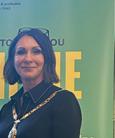




We launched our Manifesto 2024 at parliament in May, spotlighting the sector’s massive impact on careers, communities and wellbeing. We shared our vision for the future and asks of the next government. Top business leaders also had the opportunity to speak with MPs Kevin Hollinrake and Caroline Nokes directly, to share their views on the government’s support for the sector. Our manifesto has given us a great platform with Labour, with some of our themes reflected in their future plans. Read more on page 29.
Back in April, we met up with Kevin Hollinrake MP and other senior government officials to voice the concerns and proposals of our Members. Key issues raised were reforms for apprenticeships, incentives for employers, business cost pressures like energy bills and actions to tackle skills shortages. The aim is to establish commitment from ministers to reduce administrative burdens on small businesses and increase funding for apprenticeships and staff training initiatives. Caroline Larissey said: ‘Our Members have been loudly voicing their struggles amid the cost of living crisis. This roundtable allowed us to propose tangible solutions directly to policymakers to safeguard the future prosperity of our sector.’


We had a blast at the L’Oréal Professional ‘Women in Science Awards’ at parliament in March. It was all about honouring women in science, maths, engineering and sustainable development. We got some great insights from the MPs Caroline Nokes and Anneliese Dodds. Plus we got to catch up with industry peers as well.
The NHBF's president Amanda Lodge-Stewart and chief executive Caroline Larissey attended the Hair and Beauty Charity's annual summer party in June. Held in London, the event celebrates the dedication and hard work the charity does to help out its beneficiaries, as well as raise money and awareness at the same time. Find out more at hairandbeautycharity.org or follow @hbcharityuk



● Salon International 12-14 October, ExCeL London
The latest NHBF State of the Industry Survey results show that despite a continued slow and steady recovery, challenges remain in the sector. Carried out in April, the quarterly survey’s results reflect how businesses are still battling through the recession with rising wage costs and high energy prices.
● There has been a 5% increase in businesses making a profit (from 40% to 45%) since the last survey, with 43% breaking even.
● The National Minimum Wage and National Living Wage (NMW/NLW) rises in April resulted in many businesses ( 66%) putting up their prices (up from 39%) with a further 46% planning to do so over the next three months.
● More than half ( 56%) of businesses are either partially or completely reliant on government support.
● The biggest concern of businesses ( 75%) – the highest level recorded and up from 67%) is the increase to NMW/NLW, closely followed by energy costs at 61%.
● Businesses are dealing with these costs by:
› Putting up prices ( 57%)
› Holding off taking on new staff ( 41%)
› Halting investment plans ( 23%)
› Reducing staff hours ( 22%).
● Recruitment intentions remain low – only 16% plan to take on new staff, and only 14% intend to take on apprentices (up 5% though).
● Finding staff remains tricky, with 73% saying it’s harder than 12 months ago.
● Business survival expectations are positive, with 74% of businesses confident of their survival over the next six months.
● Turnover expectations are up slightly – 34% from 30% last quarter.
● Intentions for growth are steady, with 41% intending to grow the business either rapidly or moderately, while 14% plan to downsize or hand over their business.
Read more at nhbf.co.uk/ state-of-the-industry-2024
2024 SURVEY STATS
493 respondents
92% are salon or barbershop owners
8% are self-employed individuals
5% are involved in the wider-space renting, mobile and freelance part of the sector
‘These latest quarterly survey results reveal the sector’s ongoing struggles, particularly with rising costs and staff shortages despite the recent end to the UK’s recession. We urge the government to take swift action to support these businesses, which are central to local economies and community wellbeing across the UK.’
Longstanding Member Jennifer shares her salon’s story.
Twenty years ago, when the salon I was working at went up for sale, I was so scared of losing my job that I ended up buying it myself, and Obsessions was born. We celebrated our 20th anniversary in May with different events and by treating some of the local female business owners who have supported us.
We’re located by the harbour in Ramsgate, on the Kent coast, so the town is only just 22 miles from France – we even pick up French radio.


We are the ‘London salon’ in Ramsgate now, but about 10 years ago I nearly lost the business and I had to make big changes. I decided to make a real effort to understand our ideal client – she is called Sue. She has a whole persona and is based on a genuine client. Everything we do in the salon – from the music we play to the way the coffee is made, to how we word every email – is exactly how Sue would like it. Keeping an ideal client in mind has been a brilliant marketing tool because we are able to tap into this person to understand what she wants and needs and to provide it in spades. It also equips the team to understand exactly who they work for, so they’re always staying on brand.


Salon name: Obsessions
Owner: Jennifer Louise Kerr (pictured)
Location: Ramsgate, Kent
Staff : Six
Web: obsessionssalon.co.uk
IG: @obsessions.salon and @jennifer.louise.kerr


My goal is to not only equip salon professionals with the tools to manage their mental health but also to transform salons into beacons of positivity and support for both staff and clients. There are a lot of conversations that happen in the salon chairs every single day, and I’m very mindful about teaching the team how to hold those conversations in an impactful and positive way.
Right now, as a business, our key focus is mental health – for our team and our clients. I’m a certified mental health first aid trainer and co-founder of MindKite – a business specialising in fostering mental wellness in various professional communities.
No one teaches you how to run a business when you’re training to be a hairdresser, so the NHBF has been vital these last 20 years in keeping me legal, compliant and up to date with health and safety, particularly as a new salon starting up. To have that daily support whenever I need it and to be able to just jump on the website and pull off the documentation that I need and get that answer 24/7 is key for me – the contracts especially have been phenomenal.
If you’re an NHBF Member business and want to share your journey or experience as a Member, get in touch! Email hollie@salonfocusmagazine.co.uk

























Following elections in March, four new Members were successfully welcomed onto the NHBF Board and begin their roles from July. Here’s who they are…

LOUISE FORDHAM (@loubespoke hairdressingrugby)
Owner of Bespoke
Hairdressing in Rugby
An advocate for creating inclusive and supportive work environments, Louise brings her experience and her background in leadership and management to the Board. With a commitment to promoting unity and inclusion, Louise’s contributions will undoubtedly enrich the NHBF’s initiatives.
Louise said: ‘ Through my role at the NHBF, I will be a passionate advocate for best practice that encourages creativity and diversity within our industry. In our salon, we get to make people happy every single day and that’s why it’s such a great world to be part of.’






Founding partner of Feathers Salon Group, Essex, and CEO of Passion4hair
A stalwart in the hairdressing industry with 45 years of experience, Debbie joins the Board with a deep understanding of the industry’s challenges and opportunities. Her vision for professionalism aligns seamlessly with the NHBF’s objectives.
Debbie said: ‘I’m looking forward to being a Board member of the NHBF to contribute and learn as the industry navigates change and moves into the future.’

Founder of Pall Mall Barbers, London and New York
Richard is a respected figure in the barbering world, known for his dedication to elevating industry standards. Richard’s appointment heralds a new era of innovation and positive change within the NHBF and the broader sector.
Richard said: ‘ When I was 16 at college, I used to compete at NHBF competitions, and many years later I get to add my 36 years’ experience back into shaping the future of our industry. I’m really excited to be adding as much value as possible and making a difference at every level.’



Founder/director of k:SPA in Fareham
Having worked in the beauty sector for more than 30 years, in both the UK and Thailand, Kelly says she’s thrilled to be joining the NHBF Board.
‘I’m also excited to join the fight for better standards and licensing for the beauty and aesthetics sector. Ensuring a level playing field for both medics and beauty professionals, so that everyone has access to the accredited qualifications required to perform the procedures safely to the consumer.’
As well as the new Board members, Beverley Bates was re-elected and will serve another term alongside Fiona Johnston The new vice president was announced as Jamie Mettyear – owner of Mettyear’s Day Spa in Kent. Jamie has been a Board member for a year and was promoted in recognition of his hard work, commitment, and valuable contributions to the NHBF.
NHBF chief executive Caroline Larissey expressed her excitement about the newly appointed members of the NHBF team: ‘I’m delighted to welcome them – each brings a wealth of experience and expertise that will undoubtedly strengthen our mission of supporting safe, legal, and profitable hair and beauty businesses.’
Cathy Weston
NHBF director of quality and standards

With an impressive background in education, having worked in the field for more than 30 years, Cathy has spent the last 17 years as a senior executive running a national apprenticeship programme for a large and internationally renowned hairdressing franchise.
Throughout her career, Cathy has been actively engaged in supporting the development of new apprenticeship standards. She has been a member of key employer (Trailblazer) groups and, in 2017, was invited to join the Institute for Apprenticeships and Technical Education In 2018, she accepted the role of vice chair of the Hair and Beauty Route Panel.
As a National Apprenticeship Ambassador since 2015, Cathy has worked closely with central government, regularly meeting with officials and stakeholders to promote apprenticeships across the UK. With her vast experience and passion for providing career opportunities to young people from all backgrounds, Cathy is a frequent speaker at national skills events, promoting vocational education.
On her new appointment, Cathy said: ‘While I have enjoyed my career to date and am grateful for the opportunities I’ve had, I now wish to use my experiences and knowledge to work in a much broader setting and challenge myself further to support the wider hair and beauty sector, including the small salon businesses typical of the one in which I started my hairdressing.’
Kelly Edwards (@kellyedwards1910)
NHBF quality and standards manager for beauty

An experienced beauty therapist and trainer, Kelly has spent the past 15 years working in education, teaching beauty therapy and managing a beauty academy. As part of this management role, Kelly oversaw curriculum and delivery of apprenticeships, and levels 2, 3 and 4 beauty therapy and aesthetics. More recently Kelly wrote a level 3 advanced skincare unit for an international BTEC qualification and is currently collaborating on a level 5 aesthetics practitioner apprenticeship standard.
Kelly also works for an international awarding body as an external quality assurer, supporting training providers with standardisation and quality of assessment.
Kelly said: ‘I’m passionate about the beauty, aesthetics and wellbeing sector and understand the need to raise its profile as an exciting and fruitful career option, while ensuring that high-quality training is accessible, credible and current. My goal in my new role is to link the dots between the NHBF, the employer, the therapist and education. I feel there are gaps in between that I would like to fill with good advice and support.’




As hair and beauty services, treatments and products grow in popularity for pre-teens, what are the implications for the sector?



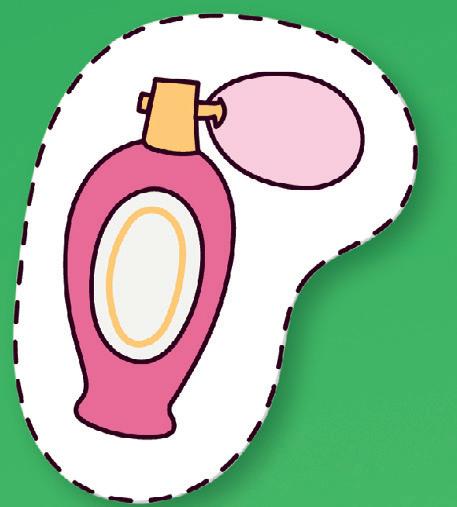


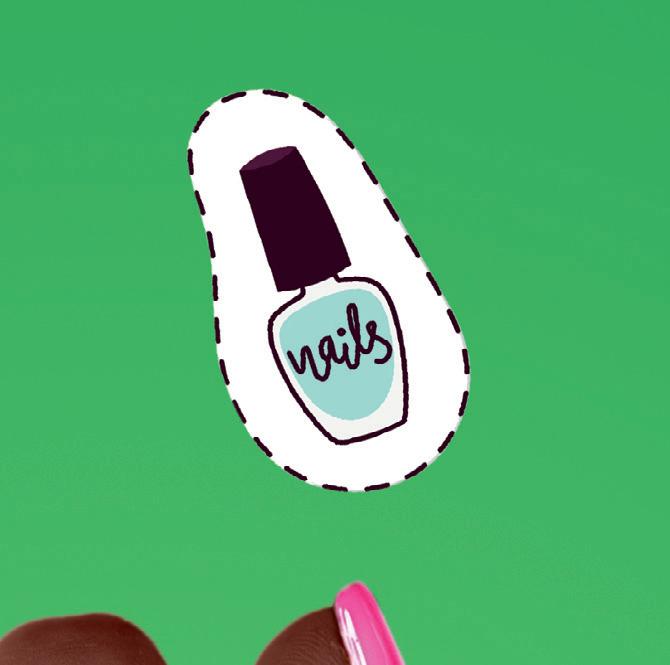





























The annual spend on toiletries and cosmetics by UK children aged 10 to 18 is a whopping £709m, according to The Insights Family Kids Insights Global Health & Beauty Report 2020, highlighting that the tween and teen demographic is big business for beauty.
However, in Sweden, a major pharmacy chain – Apotek Hjärtat – has recently announced that it will limit sales of certain skincare products to customers under 15 years old. To purchase products including AHAs, BHAs and retinol, customers need to be aged at least 15, and have permission from their parents or be able to produce a medical certificate that justifies their use.
‘We want to take greater responsibility for not being involved in pushing unhealthy behaviours and ideals that have grown up among many young people,’ said CEO Monika Magnusson said at the time.





















Another Swedish company, the skincare brand Mantel, has gone a step further and launched an age restriction on its website and will only sell its products to over-18s ‘as the formulas contain active ingredients not suitable for younger skin’.



The British Association for Dermatologists has warned that such products can cause allergies in younger skin. And dermatologists have expressed concern that growing numbers of children described as ‘tweens’ (aged eight to 12 ), especially girls, are influenced by social media to use expensive, anti-ageing

skincare products, and ask their parents for such items.


IT'S EXPOSURE TO SOCIAL MEDIA PLATFORMS LIKE INSTAGRAM AND TIKTOK THAT HEAVILY INFLUENCE













NHBF Member Amy Green, owner and founder of the brow job beauty studio in Chester, says her team get lots of parents asking for help to support their children through the ‘complex world of beauty’. ‘We often get told by our younger clients and their parents/guardians that it’s not just a desire to explore their identity that’s got pre-teens interested in laminated brows or a seven-step skincare routine,’ she says. ‘It’s exposure to social media platforms like Instagram and TikTok that uence beauty standards and trends. Pre-teens and teenagers are becoming more aware of beauty treatments and techniques at a much earlier age,’

But while the technology is new, the interest younger people have in hair and beauty is not. ‘It has been around for years and not changed from when I was a junior barber 36 years ago,’ says Richard Marshall, founder and owner of Pall Mall Barbers in London and NHBF Board member. ‘We’re always seeing new trends coming from younger clients, and we’re taking on new trends quickly.’
















TikT nce b d tren s are uty t at a m ettye and ent, a’s v ility iffer nd p oun more labl 15 years ago s n ts e ng heavily influen aware of beau techniques a she adds.
























lients and hat re th ens ys at e-te ming ents and on new trend rm f-c cho eat llow Psyc agr com o ta it’s eir eens gmore Nor sel Psyc Whe fel a to wn up ple,’ usson pany, tel, ion on y it the for n for ned ger ts have growing

Jamie Me a Café in Ke media abi di a an yo m avail yearsa
















Psychologist Dr Sandra Wheatley, an associate fellow of the British Psychological Society, agrees that it’s common for people to take an interest in









Jamie Mettyear, NHBF vice president and owner of Mettyears Day Spa, Salon and Café in Kent, agrees that social media’s vast reach and ability to demonstrate erent treatments and products means younger clients are more aware what’s available compared to 15 years ago. ‘Whether it is a simple search, such as: “best conditioner for damaged hair”, or “best face cleanser for oily skin”, it’s so easy now to shop online,’ he says.

















● Keep it age-appropriate
● Make it a conversation, as you would with any client
● Be wary of children appearing vulnerable – they are choosing a look ‘because their boyfriend wants them to,’ for example
● Highlight that social media content is heavily filtered and edited
● Focus on self-care, and realistic and healthy goals
● Promote diverse ranges of beauty standards –celebrate uniqueness and encourage individuality

● Provide alternative treatments.










themselves at this age. ‘It’s also about normalising self-care. More of us adults are having treatments. Our children see us doing it and think, “Oh well I’ll do it,”’ she adds. ‘All we can do is try and make sure it’s kept within the bounds of being healthy.’







Sandra says if left unchecked, and young people become obsessed about or concerned with their appearance, it will be detrimental to their mental health. ‘Anything taken to extremes is,’ she adds. But if hair and beauty care is taken into perspective as something to be enjoyed and not adhered to, there is no harm in it, she says.
It’s important for professionals to give people the space to explore and express themselves but also give people the opportunity to change their minds, Sandra explains. ‘You’re dealing with somebody who is developing their sense of self, who might be in the throes of massive hormonal changes




that will affect how they perceive themselves and how they wish to be perceived. They’re still trying on their “real self”,’ she adds.
For Jamie, the key thing is to always be able to recommend the correct service for an individual, not just follow a trend. ‘School life is very different to adult life. A student is always thinking about how they are perceived, and time spent with a stylist or barber can be very influential.’
● Communication with children and their parents/guardians
● Educating children and their parents about the purpose and potential risks of treatments
● Insurance implications of treatments on younger customers (see box, right)
● Legal age limits for treatments (see Resources)
● Parental consent forms
● School rules
But there are age limits for certain services, such as colours, tints and more invasive treatments, which are always recommended for over-21s with a detailed consultation. The NHBF's fact sheet on qualifications and age restrictions (see Resources) can help Members to check the limits. ‘Insurance policies may have to be revisited if you are operating outside of these guidelines,’ Jamie adds. Parental consent is essential too and barbers need to know how to ask


● Suitability of treatments for younger skin and hair.































children questions about what they want and listen to their answers. ‘If you’re not sure if it’s okay, ask their parents for guidance,’ Richard says. ‘Permission is key. We’re taking direction from clients and the delivery of their wishes – that is our business. Follow parents’ instructions and make sure you have them recorded, digitally or on paper.’
Amy agrees: ‘Ensure parents are informed about the procedures and can support their decisionmaking process.’ At the brow job, clients have an in-depth consultation that includes professionals asking for a date of birth and if necessary proof of age, and asking about school rules.
‘We would never help or encourage a child to breach school rules. However, I don’t think our responsibility carries into knowing


‘It’s impossible to have a “one-sizefits-all” policy that works for all treatments,’ Amy Green says.
‘There are lots of factors to consider when deciding what is the youngest age you would perform a treatment including your insurance, manufacturers’ instructions, parental/guardian consent,’ she adds. ‘But we believe it goes deeper than ticking those legal boxes.’ Amy and her team ask themselves:
● Is it morally and ethically okay to perform this treatment on someone of this age?
● Is our studio appropriate for pre-teens and teens? (We have a mirror with a swear word printed on it, for example! So we wouldn’t put kids in front of that)
● Would it negatively or positively impact our existing clients?




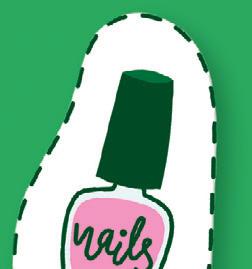











Simon Henderson, managing director (schemes and affinities) at Jensten Insurance Brokers says: ‘The insurance implications for hair and beauty businesses offering services and products to customers under 16 can vary based on local regulations and insurance policies. Typically, medical malpractice policies include a clause excluding minors from receiving treatments, stipulating that individuals under 18 cannot undergo procedures.
‘However, insurers may make exceptions for basic treatments such as facials, contingent upon obtaining parental or guardian consent and ensuring their presence during the procedure.
their school or college policies. If someone of school age comes to us to get nail art we might ask: “Do they mind you having nail art at school?”
However, it’s not for us to say whether they should or shouldn’t have nail art.’
The team at the brow job have a holistic approach to discussing beauty treatments with pre-teens and teenagers (see Case study). ‘We tailor conversations about beauty treatments to the age and maturity level of the person we’re talking to,’ Amy says. ‘We avoid using language or promoting ideas that could contribute to unrealistic beauty standards and we never point out “flaws”.
‘We emphasise that beauty should be




‘It’s prudent for hair and beauty business owners to carefully review their insurance policies and local regulations to ensure they comply and have adequate cover.
‘Policies will probably require modifications to cater to younger clients. This entails endorsing the policy to indicate the minimum age of the clients receiving the treatments and specifying which treatments will be available to the minor. Insurers usually establish a minimum age threshold, after around 12 years old, and may restrict coverage to select treatments, like skin treatments.
‘It’s essential for business owners to discuss the specifics with their insurers and adjust their policies accordingly to guarantee sufficient coverage for younger clients.’

fun and the importance of beauty being a self-care exercise that contributes to overall wellbeing rather than solely focusing on appearance. We encourage people to develop self-confidence and embrace their natural features.’
Ultimately, if owners want to encourage younger clients, they need to make a decision based on their own salon. It can be positive for both young people and salons as long as professionals are taking a clientfirst approach.
Amy concludes: ‘We need to make sure we are always supporting selfesteem and not damaging it, but in this complex world with the pressures of society and social media it can be a tricky thing to get right.’

● Next Step Beauty blog – Treating clients under 16 years old: bit.ly/NSB-blog
● NHBF Qualifications and age restrictions fact sheet: nhbf.co.uk/qualifications
● NHBF blog – Body image and body dysmorphia: nhbf.co.uk/body-image













How can hair and beauty business owners and individuals avoid falling into the trap of disguised employment?

More than half of the people working in the hair and beauty sector – 60.5% – are self-employed, according to the NHBF’s latest statistics. And with so many salon and barbershop owners renting chairs, rooms and spaces, it’s crucial that they, and selfemployed independent contractors, are clear on what that arrangement means. Failure to follow the rules could result in costly penalties in both backdated entitlements and unpaid tax.
Laura Williams, a solicitor at NHBF legal partner WorkNest, explains. ‘Disguised employment is where we have people who are, on the face of it, self-employed individuals in the business, but are actually akin to and treated as employees. If you’re a blended salon or barbershop with a combination of the two, it’s important to treat them differently.’



P


If HMRC or an employment tribunal later determines that so-called self-employed individuals are in fact employed, a business owner will be open to claims for a host of unpaid backdated entitlements. These include unpaid holiday and sick pay, pension and National Insurance contributions.
The NHBF continues to work with HMRC to ensure there is clear guidance and education for business owners and individuals so people don’t fall into this trap. Tina Beaumont-Goddard, NHBF director of membership, says: ‘Because there are so many different business models, people do get confused. We are aware some businesses are choosing to move their employed staff to selfemployed, but it is crucial to consider the risks of




















THINGS SEPARA ain a clear line betwe n who emp on ployed chair/room/space e h a nage their own diaries sa op t control any aspect e ervices they provide. aym nt the rshop’s account.’








are updated,’ says Tina. ‘Be wary of using terminology like “Meet the team” to refer to people who are self-employed. Clients should know from day one that they are booking with a self-employed independent contractor.’

‘That might be a contract of employment or a commercial chair-renting agreement,’ says Laura, ‘so you have a good indication of the parties’ intentions at the outset.’ And ensure the contract is legal. NHBF Board member Debbie Digby, who owns Feathers Salon Group and Passion4Hair, warns: ‘A contract doesn’t trump the law. You can’t say we agreed to work outside the law. You need to ensure there are no blurred lines, because you understand the law and the “what if”. What if they don’t want to work here anymore? What does that mean?’










ENT you pp that certain -employed, vacy policies ina ‘B ether it’s someone who has ora co has come


self-employed or a contractor who has come in afresh, it’s easy for them to become integrated into the business,’ says Tina. ‘A regular review of the arrangement can stop that. They’re not part of your team, they are running their own business.’
Those wanting to become self-employed must understand the implications, says Debbie.
‘When you’re employed, you have certain benefits and protections under the law, which you give up once you become self-employed. It’s important people understand that and make a contingency for themselves. Put money aside for your holiday, for your pension, and get good advice about tax so you aren’t surprised by a big tax bill.’
If in doubt, seek professional advice. Members can access the NHBF’s free legal helpline at nhbf.co.uk/legal-support




HMRC has been working with the NHBF to help Members understand what chair renting means for their tax bill. But while HMRC recognises that this is a longstanding, widespread and legitimate practice in the sector, employment status is determined not by choice but by the terms and conditions under which someone works.

managing this arrangement. We would urge anyone considering this to seek legal advice first, because that relationship cannot continue as before.

‘If an employee moves to renting but is still using the salon or barbershop price list, servicing the same clients, working the same hours, going on team training sessions, what’s changed? This could be disguised employment. Business owners must also be aware that self-employed individuals are free to compete for your clients.’ Laura adds: ‘There’s not one definitive thing the courts will look at to determine employment status – it’s very fact-specific.’
The NHBF has created a checklist based on HMRC guidelines to help Members understand an individual’s employment status. But with many different factors to consider, it’s important to note that this list is not definitive – just guidance, and tribunals may consider other factors when considering the status of a worker, employee or self-employed independent contractor. Tina says: ‘Always consider the written agreement and the working practice together. Members should seek advice if they’re unsure.’
An HMRC spokesperson said: ‘We’re committed to supporting those in the hair and beauty sector to get their tax right, including when it comes to employment status. In particular, we encourage people to use our Check Employment Status for Tax (CEST) tool to check the employment status of an engagement.’
If the information given is accurate, HMRC will stand by the CEST result.
Unpaid tax may result in penalties. Anyone who has not declared taxable income is encouraged to contact HMRC as soon as possible. Use the tool: gov.uk/guidance/ check-employmentstatus-for-tax




NHBF Member Janel Grant is a selfemployed session manicurist and owner of Grant’d Beauty, Luton
‘I have experience of being both employed and self-employed. At a previous salon I worked at, I decided to become selfemployed. However, after making that decision I was still using the salon’s products and equipment, and the owner initially wanted me to stay on their booking system, but I declined, knowing that things like that were not the correct procedure.
‘Luckily, they respected my decision and there were no further issues. But I have friends in similar self-employed situations who have had issues with salons trying to dictate how they run their business and treating them like employees. Unfortunately, not everyone is aware of, or follows, the rules.
‘I have since moved to a new salon where I am renting a room as a self-employed manicurist. I have been given a key to the property, which I have 24/7 access to. I have free rein in my designated room – I can decorate it how I want – and the salon owner has allowed me to sublet my room as well, so I’m a business within a business, subletting to another business... it’s great! I used one of the NHBF contract templates for my sublet, which made sure I was getting it right from the start.’
● NHBF self-employed chair/space/ room renters checklist: nhbf.co.uk/chair-renting-checklist
● NHBF chair, space and room renting for salon owners guide: nhbf.co.uk/salon-owners-guide
● NHBF chair, space and room renting guide: nhbf.co.uk/ chair-renting-guide
● NHBF independent contractor agreements: nhbf.co.uk/ chair-renting-leaseholder

● Tax guidance: bit.ly/vtaxper69100 and bit.ly/v taxper68600

NHBF director of policy and public
affairs Rosina Robson highlights the main points from NHBF Manifesto 2024: The value of hair and beauty – careers, communities, wellbeing.

Thriving, creative, continually evolving and innovative – this is the NHBF’s vision for the future of the sector and the main focus of our Manifesto 2024. Ahead of the general election on 4 July, we need the support of the next government to achieve this vision, which is why we launched the document at a roundtable event in parliament back in May.
What is a manifesto?
A manifesto is a written declaration of intentions or views. Ours sets out our wishlist of recommendations for the sector and for a future where the government fully recognises the sector’s potential to drive growth, engage young people in meaningful careers, promote wellbeing and contribute to net-zero targets.
What’s in it?
You can access the full manifesto at nhbf.co.uk/manifesto-2024 but the main themes in the document, and the asks/ recommendations of government, are: Recognise the value to the UK economy and communities
With barbers, nail bars, beauty salons increasing but the number of hairdressers in decline, the NHBF calls for:
● VAT reform
● Business rates reform
● Restraint on rising wages
● Positive high-street policies and investment
● Targeted support on energy
● A crackdown on tax-evading businesses.
Employment, skills and apprenticeships
Affordability of apprentices is a challenge for small and micro businesses, so we call for:
● More effective redistribution of levy funding
● Flexi-apprenticeships
● Joint promotion of the beauty T level
● Modernising careers advice
● Improving DfE liaison with schools.
Sustainability
Sector initiatives are contributing towards net-zero targets, and we call for further green incentives to support business.
Health and wellbeing
With many businesses contributing solutions to mental health, stress, cancer care and supporting NHS services through complementary therapies, we call for:
● Action to encourage social prescribing
● Ensuring a level playing field between the beauty and medical sector through aesthetics legislation.
With an election in July, our manifesto gives a platform for a conversation with the different political parties about the future and how the next government can support the sector. It brings all of our policy ideas and asks into one place. It’s also a positive campaign tool for
the sector to sell what it has to offer – economic value, jobs, wellbeing – to decision-makers, and gives a framework for us to have multiple conversations with MPs and officials of all parties.
The roundtable was hosted in a room at the Houses of Parliament by Caroline Nokes MP, chair of the Women and Equalities Committee. We had the opportunity to present our manifesto and and discuss the widespread value of the sector in terms of economic value and wellbeing. Leading business owners had the opportunity to speak directly to the business minister Kevin Hollinrake, giving views on the government’s support to the sector and future plans.
49,000+
The number of hair and beauty businesses across the UK – mainly small and micro, and often led by female entrepreneurs
238,500 The number of people employed by the sector
£4.56bn The total turnover generated by sector businesses in 2023 46% of whom are aged 16-34
86% are female
Kevin Hollinrake, business minister, said: ‘The hair and beauty sector makes an important contribution to our high streets, daily lives and local economies. We’ve backed the sector through business rates and energy bill support, increasing the VAT threshold as well as through additional funding towards training costs. Working together with organisations like the NHBF, we are committed to ensuring that the sector can continue to thrive and grow.’
Rushanara Ali, shadow minister (investment and small business), said: ‘Labour has an ambitious plan to support small
business. We recognise that hair and beauty businesses are a key part of the high street, the economy and make a strong contribution to wellbeing. In line with some of the themes in this manifesto, we plan to scrap business rates, revitalise our high streets and take skills in a new direction through technical excellence colleges and a new growth and skills levy.’
£24.5bn
The total consumer spend across the whole sector
‘Our sector is absolutely vital to the fabric of communities up and down the country. This manifesto lays out a clear vision for how government can better support the creativity, entrepreneurship and public service displayed by our Members every single day. With targeted support, as outlined in our manifesto, the sector, which already offers so much to the economy and local communities, can continue to play a central role in the UK’s economic recovery, youth employment, apprenticeships and the enhancement of people’s wellbeing and sustainability into the future.’
Get involved! Contact your local MP and candidates and share the manifesto with them, highlighting key local issues and recommendations for the future.
Use the Member campaign toolkit and template MPs letter at nhbf.co.uk/manifesto-2024-toolkit

During a tricky time for the sector, it’s crucial to put the client at the heart of the experience.
As the fallout from the Covid-19 pandemic continues to be felt across the hair and beauty sector, compounded by cost of living challenges, it’s more important than ever to remember that the client is king (or queen). But what does that look like in 2024?
Indulgence versus necessity
Many hair and beauty businesses are seeing clients come in less often than previously – whether it’s down to financial reasons, the availability of at-home products, changing priorities, or people having learned to go much longer between appointments during the pandemic. Salons have to make each and every visit really count.
‘As an industry, we’re moving away from volume – it’s no longer 10 to 12 clients a day,’ says Jamie Brooks, co-founder of Brooks & Brooks, London. ‘We’re now seen

as a luxury, rather than a service industry, and our offering has to reflect that. We have to wow people.’
Valerie Delforge, founder and international business consultant at The Delforge Group, agrees: ‘Salon visits now are about “me time” and treating yourself, and the team needs to reflect that and make the experience special.’

The pandemic accelerated many technological changes, with online booking systems becoming more common. These allow clients to make appointments whenever they want, including out of hours, and they no longer have to wait on the
phone to speak to reception – but have they removed a layer of the client relationship?
‘I always recommend personally engaging with clients, even when they book online,’ says Valerie. ‘A call from your front of house 24 hours before to confirm the appointment is a great opportunity to address specific requirements, answer questions and, where appropriate, upsell and cross-sell, to ensure they have an exceptional experience on the day.’
The right environment ‘People expect more now,’ says Jamie. ‘The refreshments, the music, the ambience and the professionalism have to be 100% every time.’
PEOPLE EXPECT MORE NOW... THE MUSIC, THE AMBIENCE AND THE PROFESSIONALISM HAVE TO BE 100% EVERY TIME































To build enduring relationships with clients, consider setting up a loyalty programme.

Valerie: ‘It’s a win-win for both the salon and the client. Not only does it drive repeat visits, but it also ensures clients feel that their custom is valued and rewarded.’

Dale: ‘Our loyalty app is easily accessible on a client’s phone and through it they receive a discount two or three times a year. It’s our way of saying thank you for continuing to choose us.’

Jamie: ‘It’s about creating a community and offering rewards, extras and something special. The old days of simply opening the doors and waiting for the phone to ring have long gone. Salons have got to show initiative in how they attract, and keep, clients.’
TOP TIP: Club membership doesn’t only have to provide financial benefits. Consider:
● ‘How to’ videos and blogs
● Q&As on caring for different hair types
● Expert advice on everything from heated styling tools to choosing the right brush
● Free product samples to take home.



‘We want the client to feel welcome and part of the family the minute they walk through the door, and regularly do role-play with the team so they get this right every time,’ says Dale Sampey, master barber and owner of The Barber House, Birmingham. ‘We take their coat and bag so they can sit down and relax, offer a complimentary drink and ask if they’d like their shoes shined while they’re waiting – an extra touch that’s always well received.’
A key skill is being able to judge whether your client wants peace and quiet, is keen to chat or would like a bit of both – and responding accordingly.
‘All staff join us as apprentices and one thing we start training them on from day one is how to interact with clients,’ says Dale. ‘We invest hours in this area and I always lead by example, as it’s so important. The shop floor is like a stage, and you have to put on a good show 10 hours a day, six days a week.’
It’s all in the detail
Physical details, such as offering high-end toiletries in the client bathroom or a wide choice of refreshments, contribute to a sense of being looked after. First-class client care, though, focuses on providing bespoke touches for the individual. In fact, in its recent UK Customer Experience Excellence report, KPMG found that personalisation is the biggest driver of loyalty.
‘Making notes on a client’s file is at the heart of getting to know them and making their journey extremely personal,’ says Valerie. ‘When I went for a massage recently, the receptionist already had my beverage prepared how I like it. I loved the attention to detail and how it made me feel.’
See it from their point of view
‘Regularly revisiting your client journey is key to delivering high-end service,’ adds Valerie. ‘What worked








Clients put their trust in your team to ensure they look and feel exactly how they want to when they leave. As a result, happy, welltrained staff are key to delivering an outstanding client experience.
‘We are our product,’ says Jamie. ‘To justify clients coming into the salon rather than doing it themselves at home, we have to be knowledgeable, professional and masters of the craft Education and training have therefore never been more important, so we showcase our expertise and get ahead of the latest trends and techniques – you have to be at the top of your game.’
‘Focusing on the staff experience is equally important,’ adds Valerie. ‘Is there an induction programme, so they can understand your ethos and approach? Do they have individual development plans that focus on improvement, growth and results? A strong salon culture is key and, as a client, you can really feel when the team works well together.’

THE SHOP FLOOR IS LIKE A STAGE, AND YOU HAVE TO PUT ON A GOOD SHOW 10 HOURS A DAY, SIX DAYS A WEEK
last year might now need tweaking. Ultimately, what matters most is how your client feels at the end of the experience.’
‘You can’t rest on your laurels,’ agrees Jamie. ‘You’ve got to be inventive, adaptable and read the room. For example, we’ve changed our hours to accommodate our clients – it’s about servicing the client when they want, rather than them juggling their lives around our opening times.’
To understand how your clients feel:
● Study your reviews
● Ask for feedback
● Send in mystery shoppers to identify areas for improvement.
Finally, it’s not just about getting things right, it’s about how you respond when things go wrong. ‘A complaint is an opportunity to learn and improve,’ says Valerie. ‘It’s easy to take things personally and react in a way that leaves the client frustrated. Instead, take a step back, find a solution and look at what needs to change.’
● NHBF blog – What makes an outstanding client experience? nhbf.co.uk/client-experience

● NHBF blog – Creating a good workplace culture: nhbf.co.uk/ workplace-culture

● NHBF blog – Go digital: online booking for barbershops: nhbf.co.uk/online-booking





This is the third part in our series on hair loss, and with more than 15.4 million people struggling with some form of hair loss in the UK, now might be the time to think about introducing hair loss services and products to your salon or barbershop if you haven’t already.

What to consider when introducing hair loss services and products to your business.

Trichologist, salon owner and Nioxin ambassador Mark Blake says that hair loss is the biggest untapped market. ‘Around half of the people walking past your salon or barbershop will be suffering from some form of hair

loss or thinning hair,’ he says. ‘This is an excellent opportunity to help these people while increasing your revenue.’

MAKE SURE YOU CHECK INGREDIENTS AND CHOOSE PRODUCTS THAT ARE TAILORED TO YOUR CLIENTS


Salons and barbershops can potentially offer a number of hair loss services: basic advice and guidance, hair extensions, hair replacement systems, wigs and toupees, and specialist trichology services.




Mark recommends building up your knowledge of hair loss and scalp issues so you can provide free scalp check-ups.
‘Educate yourself so you can give the right advice to clients, whether it’s referring them to a GP or selling them a hair loss product. This is a good place to start and doesn’t require the amount of training that trichology services need. A day of training is enough to get you going.’
Businesses wanting to stock hair loss products should research the options online. Gail Waterman,



When introducing hair loss services and products...
Amanda says: ‘Make sure you collaborate with reputable and established wig brands, avoiding shortcuts or opting for seemingly inexpensive alternatives. Make sure you get advice and educate yourself, so you can provide good quality wigs.’




Gail says: ‘Believe in the products you sell. I’ve never sold a product that I’ve not tried myself. I make sure I experiment with everything we have to see the results. If you believe in a product, you can sell it.’







a former hairdresser and salon owner who founded hair growth company Watermans, says: ‘Make sure you check ingredients and choose products that are tailored to your clients. Some suit some people and others won’t.’
She adds that business owners are in a strong position to sell products to existing clients. ‘If they’ve been coming to you for a long time, they trust you and will open up to you. This will give you a chance to tell them about the products.’








Gail says that selling hair loss products doesn’t require a lot of training, as salon and barbershop owners and hair professionals already have the background knowledge. ‘We provide businesses with a short video about how to get great results with the products and what information to pass onto clients: for example, how long to keep the products on their hair.’



For business owners who are considering introducing hair loss services such as wigs and hair replacement systems, there is extensive training involved. Paola Greco, founder and director of Capa Hair Studio – which provides hair systems from hair replacement experts Novo Cabelo – says:
‘Launching a hair replacement system service involves significant investment in training – both in terms of time and money. You need to dedicate the necessary resources if you want to be successful.’
Paola’s team took part in training sessions run by Novo Cabelo, as


well as extra training to refine their skills and knowledge in hair systems. They also provided complimentary hair systems to select models and clients to help them develop their skills while making sure clients were satisfied with the service.


Businesses that want to introduce hair loss services should consider doing specialist courses to build their knowledge. Amanda Haldenby, director of Hair to Ware, a hair loss clinic providing wigs to people on the NHS, explains: ‘You need to address hair loss in a sensitive way. Doing a course with an organisation like Cancer Hair Care will help you to understand the appropriate terminology and provide the right advice to clients. This is crucial in fostering a supportive environment.’
Making a profit

Mark says that doing scalp reviews and selling retail products is financially viable for businesses.

‘Once you’ve done the training, there isn’t a real outlay. You’ve got the cost of the microscope, which you can get from Amazon for around £25. You can take photos of scalps on your phone or an iPad to show clients. The scalp check will take five to 10 minutes and then someone will buy the products. So, you’re turning it into a profitable service and helping the client also.’
When it comes to introducing hair loss services, it’s important to carry out an analysis of the costs and potential returns. Paola
















explains: ‘We considered the substantial increase in revenue that would come from clients who weren’t previously spending a lot in the salon. Beyond the initial service, we recognised the lucrative nature of the hair system business model as clients need to return every four to six weeks for maintenance.’

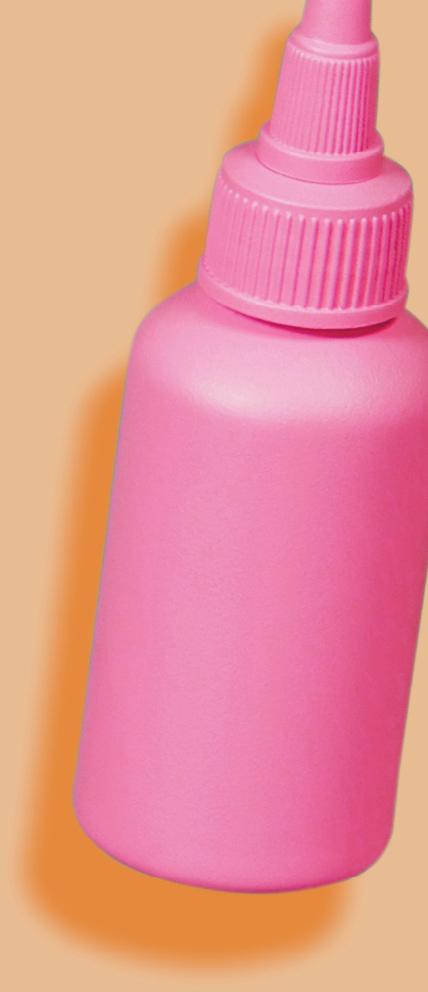









Paola invested more than £10,000 to cover the cost of training, advertising and insurance. ‘We also spent considerable money fitting out a new room for clients to have their consultations and fittings so they have privacy.’
Making a commitment





Whether you’re selling products or providing hair loss services, it’s important to put the commitment in to make it a success. ‘To make the investment worthwhile, you need to integrate the service into your salon’s offering,’ says Paola. ‘Clients are more inclined to seek out and trust salons and barbershops that specialise in addressing their specific needs.’



Selling hair loss products also requires commitment, including marketing the products and talking to clients about them. But Gail says: ‘It won’t take up extra time for stylists as they’ll do the work while they’re with the clients, and then pass them to the front of house team to buy the products.’



● NHBF blog: Offering hair loss solutions in your barbershop: nhbf.co.uk/hair-loss
● NHBF blog: Five common hair myths debunked: nhbf.co.uk/ hair-myths-debunked











































WORDS KATHY OXTOBY

Poor posture can have a devastating impact on hair and beauty professionals, but there are steps you can take to prevent back pain and other injuries.

mpact on hair re steps you her injuries.




















































Working in hair and beauty involves helping others to feel good. But this can take its toll on the body. One study found hairdressers reported ‘significantly higher levels’ of musculoskeletal problems including work-related back pain. To help prevent back pain and other musculoskeletal issues, correct posture and positioning is crucial.

enables the best outcome for the client to be achieved in terms of cutting, colouring and styling, but also protects your back, shoulders, and neck from injury,’ says Melanie McBreen, group salon owner of Changes in Milton Keynes, who has four hairdressing salons and two barbershops, and runs her own apprenticeship scheme.









● Be aware of your posture at all times
● Try and switch on your abdominal muscles as much as you can
● Take frequent breaks to stretch
● Use ergonomic equipment and workstations that can be adjusted
● Don’t maintain the same position for extended periods.

‘Correct positioning not only
For those working in the hair, beauty and barbering sectors, correct posture and positioning ‘is important for the individual’s own safety and comfort, and also for longevity of their career’, says Kelly Shaw, NHBF Board member and founder of beauty

‘As a hairdresser and beauty therapist for more than 20 years, I loved my job. However, the long hours standing and leaning over clients took a major toll on my back.
‘In my early 20s, I began experiencing excruciating lower back pain – likely caused by years of bending, twisting, and carrying heavy equipment without proper body mechanics.
‘I made the difficult decision to reduce my hours in the salon. However, my passion for the sector motivated me to explore teaching opportunities at a local college.
‘As a college lecturer I could share my technical expertise, and educate students on proper posture, ergonomics and body mechanics to help prevent the types of injuries that limited the time I could spend in the salon.
‘While my career following teaching enabled me to stay in the sector I love, I still deal with long-lasting back pain.
‘I’m hoping my story will highlight the devastating impact poor posture and ergonomics can have on the backs of hair and beauty professionals. My transition into education and current role have enabled me to continue pursuing my passion for the sector, while prioritising my physical wellbeing and preventing further damage.’
IT’S
salon k:SPA in Hampshire, who also works as a business coach with salons.
Kate Williamson, a registered osteopath and owner of Kingston Osteopathy, says: ‘Hairdressers and barbers are often working in quite awkward positions, and can be standing all day, so it’s important they are aware of their posture.’



Initial symptoms that can be nipped in the bud with better posture include back or neck pain, tingling in the hands and headaches, says Kate.
The NHBF recommends including frequent breaks into your workday to stretch, move around, and change positions, and even brief breaks every 20 to 30 minutes can help reduce muscle fatigue and prevent prolonged static postures.
It’s also advised to use adjustable chairs, stools and workstations that can be customised to fit your body size and specific tasks, which help minimise awkward postures and reduces strain on muscles and joints.
With barbering chairs, the headrest tilts back as an additional tool for doing close-up work such as men’s face care, which means barbers do not have to constantly bend their necks, says Melanie.
She advises hairdressers and barbers to use trolleys for tools and equipment, ‘keeping everything close by’, and on the right- or





















Quick shoulder shrugs Moving shoulders up and down, and repeat throughout the day, to reset the posture Neck stretches your head to the side, bringing your ear toward your shoulder. Hold for a



Quick shoulder : Moving shoulders and he day, to reset the posture : Gently tilt head to the side, your ear your shoulder. Hold for a few seconds, then repeat on the other side backstretch:Interlock
Upper back stretch your fingers behind your back and gently lift your arms up and back, squeezing your shoulder blades together


● Lower back stretch: While standing, place your hands on your lower back and gently lean backward, arching your back.
● Start slowly and gradually increase the intensity and duration of these exercises. It’s recommended to consult with a GP, a physio/sports therapist or certified sport or exercise trainer.
left-hand side depending on if they are right- or left-handed, to avoid twisting, and leaning unnecessarily.
For the beauty sector an adjustable treatment bed ‘is a must’, says Kelly. ‘You have to be able to lower and raise the beds for each individual client, otherwise you will be in completely the wrong positions.’



Good posture involves ‘trying to keep your head sitting square on your shoulders, and keeping your core (abdominal) muscles switched on’, advises Kate. An example of good posture in hairdressing and barbering is to stand with feet shoulder-width apart and weight evenly distributed on both feet, keeping knees slightly bent to maintain balance and avoid locking the joints, says the NHBF.
Nail technicians are advised to sit upright with shoulders relaxed and back supported by the chair, to keep feet flat on the floor, and to position the client’s hand at a comfortable height and close to the body to avoid excessive reaching or bending.
A bad posture would be a rounded back, protracted shoulders, and the neck flexed forward, says Kate. While good posture practices should be formed during training, it can be all too easy to slip into bad habits and teams may need reminding of what ‘good’ posture is.
If staff are seen with the wrong posture and positioning, Melanie suggests asking them how they feel. If staff say they are uncomfortable, ask them what they can do to change this. ‘I would never say to someone: “Your posture is wrong”. It’s about challenging the person to think for themselves,’ she says.
Kelly suggests taking the team member to one side and showing them movements to improve their posture. Supporting teams with their posture and positioning should be ‘part of the culture’, she says. Kelly runs training sessions where they share information and advice about posture, and ‘we help each other’.
It’s important to lead by example by practising good posture and taking breaks for stretching. And criticising
A) Poor technique: The back is bent sideways and the arm is held up.
B) Corrected: Shoulders and arms are relaxed, both hands are used, and the body is supported against the washbasin.
A)Poor technique: The back is bent with the arms held up and the head in a forward position.
B) Corrected: A chair is used, the wrists are in a better position, and the shoulders and arms are relaxed.
A) Poor technique: The client is seated too high, and the hairdresser’s right arm is drawn outwards.
B) Corrected: Arms are close to the body and the dryer is held in a better position.

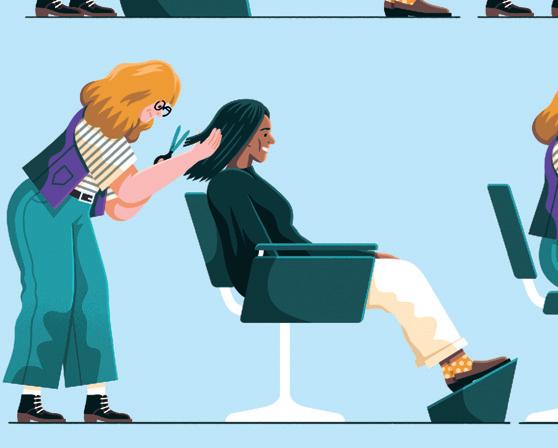

staff members for their posture in front of others or clients, dismissing concerns about the potential risks of poor posture, and forcing adjustments or changes without consulting them and understanding their needs, should be avoided, the NHBF advises.
In hairdressing, to support posture and prevent injury, Melanie suggests asking clients to reposition themselves for you. When cutting long hair, for instance, it can be better for the client to stand so the hair is at eye level, rather than the stylist having to lean down – ‘always first checking if the client is happy to stand’.
The NHBF recommends practising ‘proper body mechanics’ – learning and applying correct techniques for lifting, carrying, and performing various tasks to minimise strain and awkward postures. And varying your work routine, alternating between standing and sitting tasks, can reduce prolonged static postures and



distribute the workload evenly. Melanie would like posture to be a greater part of hair and beauty training. ‘Posture needs to be taken seriously and embedded into any education in the sector,’ she says. ‘In hairdressing, we’re good at teaching, but less so with the more personal care areas like posture. But our wellbeing is vital. And for someone’s longevity in the industry, it’s important they feel valued, and safe in the workplace.’
● The Federation of Holistic Therapists: bit.ly/FHTblog-posture
● Find your local osteopath on the General Osteopathic Council website: osteopathy.org.uk/home
When does quirky client behaviour become a deal-breaker? We advise on dealing with rude or inappropriate clients.


NHBF vice president and director
Clients can have their quirks and annoying habits, and may even say things you don’t like or agree with – but where do you draw the line and ask them not to return?
Clients whose behaviour during – or between –appointments could be deemed annoying, awkward or even inappropriate.
From attempting to haggle on price and voicing controversial views to being rude and unfriendly, there’s a whole range of client behaviours that could be deemed unacceptable (see more in Where to draw the line).
For Jamie, unrealistic expectations are also difficult to manage. ‘We get a lot of celebrity photos brought in by clients in terms of how they want their hair. But a lot of these images are edited or use wigs, so expectations of what we can achieve – and often what the price will be – are unrealistic because of this,’ he says.
‘Rudeness is an absolute no-no in my salon,’ Jamie adds. ‘There has been the odd occasion where we have refused service based upon the client’s attitude and rude behaviour. Manners cost nothing.’
‘We would politely inform the customer that this is
not the place, therapist or stylist for them,’ Jamie explains. ‘But if the decision to refuse the client service is purely based upon their expectation of results versus what we could achieve, then we would create an action plan to help get them as near to the results as possible.’
Staying calm is a must, says Jamie. ‘Never reply in a rude manner as this breaks down the professional barrier. Some clients want a reaction and if you don’t give it to them, they’ll stop. We are here to help and offer a professional service. This allows us to inform them that we are not the place for them.’
Focusing time and energy on clients you value – rather than those you don’t – will pay dividends, Jamie adds.
‘Our policy is to fix any issues that have occurred with a service we offer, but never to refund a service,’ Jamie adds.
‘I’d rather a valued client return four or five times for us to get it right and restore their faith in us.’
Put in place a strong policy for general salon/barbershop etiquette and display it in your business and on your website, Jamie advises. ‘It could cover deposits, noshow fees, rude behaviour and general standards. You could always refer a client back to this if necessary and link to it from your software package,’ he adds.
Client behaviour that could warrant refusal of service and how to handle it:
● Disruptive and inappropriate
Clients who are disruptive, rude and/or behave inappropriately can be asked to refrain from returning to the salon or barbershop. It’s reasonable to expect clients to behave appropriately and to comply with your instructions. Be mindful of how you express your instructions and make sure your response is commensurate with the client’s behaviour so as not to inflame the situation unnecessarily. Do not take any action that might endanger yourself or others.
● Defaming you and your business
No one can insult, blackmail or harass you, your staff members or your other clients. It’s highly recommended to include information about this in your policy. However, where this occurs, you can ask the client to leave without it being included.
● Sexual impropriety
If a client is behaving in an overtly sexual manner or is being sexually suggestive to employees, then that client should immediately be asked to leave.
● Under the influence Anyone under the influence of alcohol or drugs doesn’t belong in the salon or barbershop. You are also legally obliged to refuse entry or to provide a service to an intoxicated person.
● History of late cancellations and/or being a no-show
This is a common issue but serial cancellation or noshows are a fair reason to refuse to provide a service.
● Aggressive/ unfriendly/ disrespectful
You may ask a client to leave the salon or barbershop if a client is being rude for no discernible reason. You must ensure staff and other clients are safe from rude and potentially violent clients. Be mindful how you express yourself when addressing the client to make sure your response is commensurate with the client’s behaviour. Do not inflame the situation unnecessarily, and do not take any action that might endanger yourself or others.
● NHBF blog – Salon and barbershop etiquette: when you can (and should) refuse service: nhbf.co.uk/etiquette
In our latest readership survey, we asked for your views on the magazine to make sure it continues to meet your needs. Here’s what you told us...
Roles of those who answered
Hair salon or barbershop owner with employees
Hair and beauty salon owner with employees
Self-employed chair renter
Beauty salon owner
Hair salon or barbershop owner with no employees
Self-employed room/area renter
Barbershop owner with self-employed barbers
‘It’s great to read an actual magazine in between clients and on lunch breaks.’
‘I am learning more from having salonfocus – you can always go back to it and read articles again. I have also saved money from advice in the magazine.’
3 /4 ALMOST 3 IN 4 CONSIDER SALONFOCUS AN IMPORTANT BENEFIT OF THEIR NHBF MEMBERSHIP
Ages of those who answered 55 to 64
45 to 54
35 to 44
65+
25 to 34
18 to 24
‘salonfocus really does inspire stylists. Content is key to ensuring we continue to engage and look for information in the right place. We appreciate all the hard work.’
WHAT YOU WOULD LIKE TO SEE IN FUTURE ISSUES?
➤ Business advice, including HR and legal guidance
➤ More industry updates
➤ Up-to-date hair and beauty trends
➤ How to… articles on accessing affordable training and retaining and motivating employees
Prefer not to say 90% RATE THE MAGAZINE’S CONTENT HIGHLY –EITHER EXCELLENT, VERY GOOD OR GOOD
‘We’ve really appreciated the opportunity to be featured in the magazine.’
‘It’s an informative read.’
SURVEY WINNERS Congratulations to Tony Corston and Hayley Wood – the two lucky winners of the £75 John Lewis gift cards.









This issue’s Insta inspo comes from some of the finalists of the Scratch Stars Awards 2024.
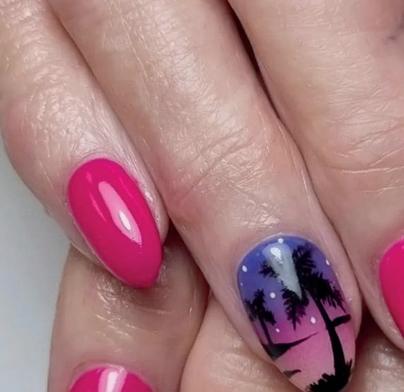













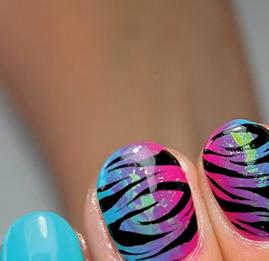




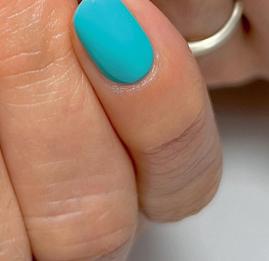


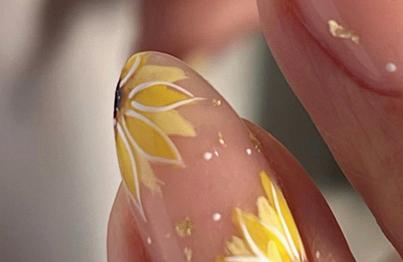






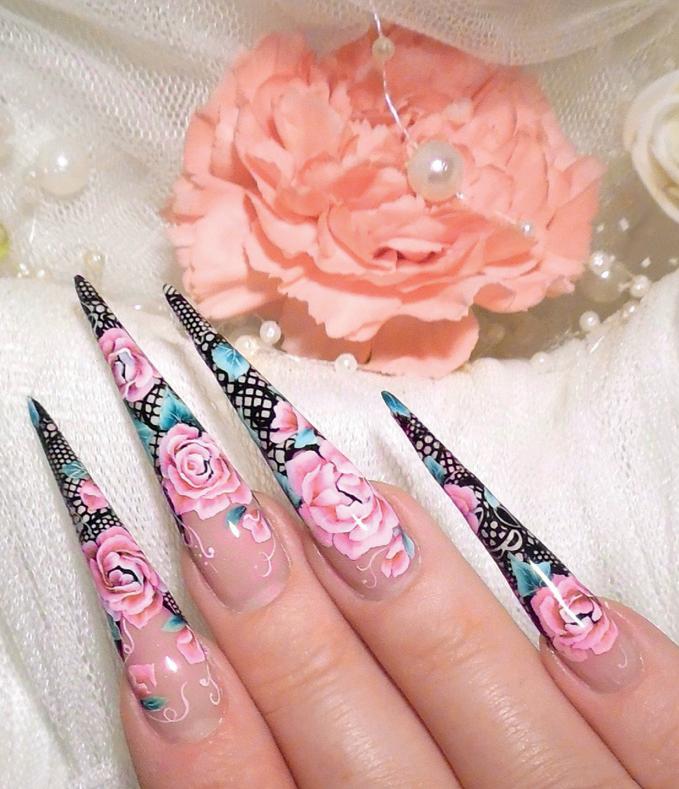






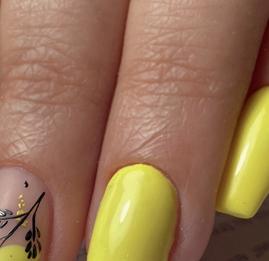
@alynails.salonandacademy

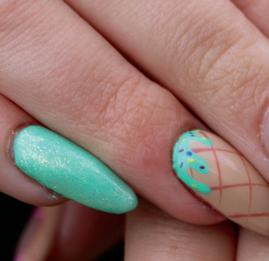




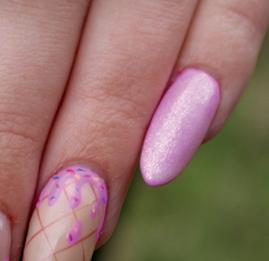
@Josettes_nail_artistry





@glamliciousnails













@alexanailsuk

@missbrinnynailartist



Have you created a style that you’re particularly proud of and want to shout about? Then post a picture to Instagram with the hashtag #salonfocus or tag @nhbfsocial and your shot could be included on these pages.


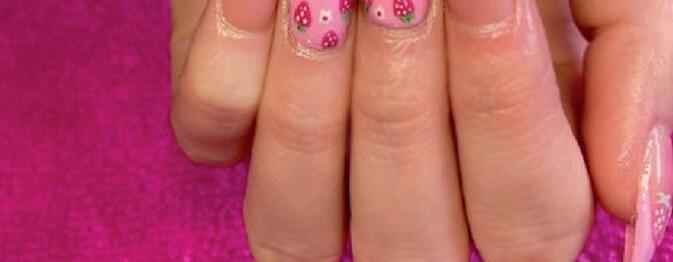

@nailartbyelizabeth91


@ilonas_beauty
Whether you embrace the trends or buck them, we take a look at the latest trends.












The humble tomato looks set to be the latest must-have active skincare ingredient, according to reports. The fruit (or veg, some might argue), which was historically prescribed by doctors to treat burns and itching, also fits the zerowaste ethos many brands are adopting. Tomato skins and seeds once thrown away can now be upcycled for skincare products:
With many younger people going alcohol free and ditching bars for healthy social scenes, after-dark wellness experiences are on the rise, the Global Wellness Summit notes.
As resorts offer nighttime stargazing, meditation and hot springs soaking – and a new wave of social bathhouses and saunas with DJs emerge – could there be a market for beauty salons and spas to create after-dark treatment menus?
Watch this space – midnight massages and facials could be the next big thing turning nightlife into a healthy, wellness experience.


● Amyrin molecules occurring in the surface wax can target skin inflammation

● Tomato hydrosol, which is 100% water removed from the fruit, can replace the aqueous phase of soothing products, such as micellar waters
● Its seeds can be pressed to extract an antioxidant oil
● The fruit’s final residues can be transformed into biodegradable plastics for eco-friendly packaging.

Many consumers aren’t looking after their skin sufficiently due to gaps in their knowledge around skincare, research suggests.

A poll of more than 3000 UK people by online retailer Beauty Pie showed the following biggest misconceptions. Further highlighting the importance of a trained beauty professional's advice! Of the respondents who said they were regular skincare users:

Only
26%
One in five (19%) admitted they often don’t remove their makeup before bed said they apply SPF to their face every day

A rep influ




A report gives an insight into how AI is influencing the way people work, lead and recruit around the world.












Published by Microsoft and LinkedIn, the report’s key findings suggest that:
Pu repo Em alrea com critic



● Employees want AI at work – and many already use it – while the majority of company leaders agree adopting AI is critical to remain competitive.
Ma th incre like C
● Many employees are skilling up in AI on their own – LinkedIn has seen a 142x increase in its members adding AI skills like ChatGPT and Copilot to their profiles. It also reports a 160% rise in non-technical professionals using its courses to boost their AI understanding.
● There are four different types of AI user, from sceptics who rarely use it to power users who use it extensively and say they are saving more than 30 minutes per day.


Research suggests the ‘inside-out’ beauty market is growing in the UK.









have used skincare products after they’ve expired
More than half (59%) said they aren’t clear which skincare products can and can’t be used together





related to hair gro t FR Rese ‘insid is gro A r Cent show more prod mark ther
A report by trend forecaster Centric Market Intelligence shows there were 57 times more beauty supplement products available on the UK market in Q4 of last year than there were in Q1 of 2021.

t’ market recaster nce s 5 s et in Q4 of last year r than n were i Q


The report, based on data from 21 beauty retailers including Boots, Selfridges and Sephora, found:
● The search term ‘hair growth supplements’ had seen a 100% year-on-year increase
It als profe their Th from users are s 37% 77%
● There had been a 76% hike in searches for ‘biotin supplements’ – a nutrient
The r from inclu and S Th supp yearTh supp
said more than the recommended application amount of product is being applied, on average
related to hair growth


A 51% and 20% year-on-year rise in searches for ‘collagen powder’ and ‘collagen tablets’ respectively, indicating increased public interest in anti-ageing solutions that can be added to the diet
● Searches for ‘keratin supplements’ also saw a 43% year-on-year hike in the UK. The research expects the trend to continue picking up.

The booming male grooming market will continue on an upward trend, reaching an estimated $115bn (more than £90bn) worldwide by 2028, according to projections from Statista. The researcher valued the market at around £70bn for 2024.
Far from purely shaving products, many male skincare regimes now include a range of in-clinic services – from facials and peels to tweakments.
One in three (32%) admitted they don’t always wash their hands before applying skincare products
And one in four (24%) regular skincare users said they’ve bought skincare just because an influencer has recommended it, without knowing if it’s suitable for their skin or what it’s designed for.
From painting nails at the kitchen table to her Glitterbels empire expansion in the US, Annabel shares her success so far.
I never dreamed I’d have my own brand… when I first started as a nail technician. I definitely wouldn’t have started Glitterbels without the push from my husband.
We were motivated by the need to create… fun, high-quality, pigmented products that last, and I think we have achieved this. My motivation now is to continue creating amazing products with extensive colour ranges and building a pink empire for my daughter Pearl.
We decided on Atlanta for our US HQ … because it has great shipping routes, meaning we can move our products faster. We’d never visited Atlanta before, but it’s safe to say we love it.
The US HQ took about a year to set up... There were so many different processes to complete before officially opening – then we had to ship over all our products and our mascot (a seven-foot-tall unicorn).
It was a lot of hard work and long hours, but we have a wonderful team of staff that helped Glitterbels take the leap across the pond.



Pink, gold, and sparkly… our US HQ is just as fabulous as our UK one. Completely on-brand, we have a huge flower wall, our unicorn is front and centre as you walk through the entrance, and the whole warehouse has pink racking and boxes. It’s like Barbie’s dream warehouse.



I don’t know specific numbers… but I’m pretty sure more than 10,000 students have started their nail journey with the Glitterbels Training Academy. It’s amazing, and I’m so proud of our fabulous team of educators and how far we’ve come since we started.
People are quite surprised to learn… that I can play the drums. I grew up playing them when I was in my rock chick phase. That was the latest inspiration for our newest collection of Hema Free Gel Polishes.


No two days are ever the same… and that’s one of the things I love most about my job. Over the past seven years, Glitterbels has allowed me to express myself, as well as travel the world and meet so many wonderful people.
It was a natural progression for the business to expand into education… but I have always stood by the sentiment that ‘learning never stops’. I think it’s crucial for nail techs to continue their learning development – it’s how you stay ahead of the game and the latest trends. The more you learn, the more you can offer and the more your client base grows.
We always have something going on… We are planning to release our very own Glitterbels Lamp and E-File this year, along with prep tools and chrome powders.
The key to success… is to be unapologetically yourself. Don’t be afraid to add your own flair to your work – it makes it stand out. Just be you and you’ll find your tribe.





































